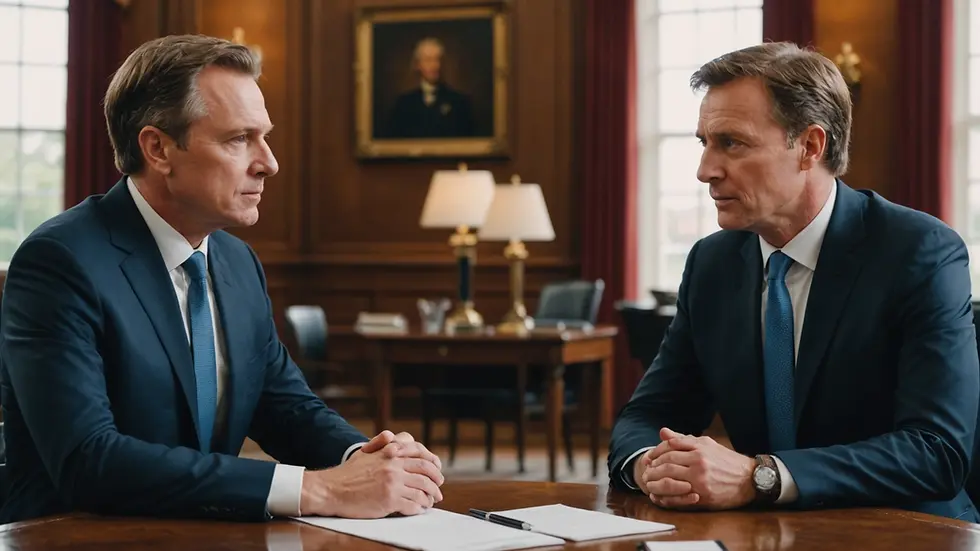Unforeseen Implications: Key Considerations in Corporate Mergers
- The Spencer Law Firm
- Feb 28
- 4 min read
Mergers and acquisitions (M&A) are critical events in the business world. They reshape companies, enhance competitive advantages, and create unique investment openings. For high-net-worth business owners and investors, comprehending the nuances of corporate mergers is vital for wise decision-making. In this post, we will explore the essential factors to consider, equipping you to navigate the complexities of corporate mergers effectively.
Understanding the Corporate Mergers Landscape
Corporate mergers involve two or more companies combining to consolidate operations, strengthen market positions, or achieve synergistic benefits. While the goal might seem straightforward, the road to successful mergers is complex and often fraught with unexpected challenges.
Mergers can be categorized in various ways:
Horizontal mergers bring companies at the same production level together. For instance, when two local grocery chains merge, they share resources to improve pricing and product offerings.
Vertical mergers occur when companies at different stages of production join hands, such as a car manufacturer merging with a parts supplier, thus streamlining operations.
Conglomerate mergers involve companies in unrelated businesses, like a technology firm acquiring a food brand to diversify its portfolio.
Understanding these distinctions can help high-net-worth investors identify the best opportunities.
Recognizing Strategic Fit and Synergy
A successful merger hinges on how well the involved companies align in operations, cultures, and goals. High-net-worth investors should evaluate whether the merging entities can work well together, leading to enhanced synergy.
Synergy types include:
Operational Synergy: Reducing costs by combining overlapping functions – a merger may lead to a 15% reduction in operational expenses.
Revenue Synergy: Increased sales from cross-selling products – for example, a software company merging with a hardware firm may boost sales by 20% by offering bundled products.
However, any anticipated synergies must be backed by comprehensive market research and realistic goal-setting to avoid overestimations.
Cultural Compatibility and Integration
Not all merger failures stem from financial issues; cultural clashes can be detrimental as well. Different management styles and corporate cultures can hinder integration. A well-strategized cultural integration approach is critical for keeping employees engaged and motivated.
Investors should thoroughly assess leadership methods and employee engagement practices of both companies to align values. Transitional strategies might include team-building workshops and open communication channels, fostering a unified culture.

Financial Due Diligence: Beyond the Numbers
While analyzing financial figures is essential, high-net-worth investors need to consider qualitative factors as well. Financial due diligence should involve more than just reviewing historical performance.
For instance, assess:
Assets and Liabilities: Examine tangible and intangible assets within both companies.
Operational Risks: Look for potential legal issues or market shifts that could jeopardize future profits.
Deep dives into these areas provide a fuller picture of the merger's potential implications.
Evaluating Regulatory Considerations
Understanding the regulatory environment surrounding mergers is critical. High-net-worth business owners must be aware of the legal requirements from governing bodies. These regulations can vary significantly across regions and industries.
Working with regulatory advisors and legal professionals who specialize in M&A can streamline this process, ensuring compliance and minimizing delays. For example, a failure to address antitrust issues could lead to a merger being blocked, wasting time and resources.
The Importance of Communication Strategy
Clear communication is crucial throughout the merger process. Crafting a solid communication plan that addresses all stakeholders—employees, clients, and investors—is essential.
Transparency fosters trust and lessens uncertainty. Provide regular updates and information sessions for employees to ease fears and ensure everyone feels included in the journey.

Assessing Human Capital
Human capital is often a merger's most valuable asset. Evaluating employee skill sets, retention rates, and leadership capabilities is critical for the merger's success.
High-net-worth investors should take inventory of the talent within both organizations. This includes understanding which employees are pivotal for success and creating retention strategies like bonuses or leadership opportunities to keep them engaged during the transition.
Technological Integration
In today's digital age, technology plays a significant role in mergers. Understanding the technology frameworks, databases, and operational software compatibility is essential for seamless integration.
A detailed review of each company’s IT systems and intellectual property can reveal both potential synergies and risks. Integrating these systems effectively can enhance operational efficiencies, potentially leading to a 30% improvement in productivity.
Long-term Vision and Strategic Goals
Mergers should align with long-term strategic goals. High-net-worth investors must clearly define what they hope to achieve through the merger, ensuring that objectives are precise.
A well-defined roadmap that outlines operational strategies, marketing plans, and growth plans post-merger will keep all stakeholders focused and responsive to changes in the market landscape.
Risk Management Framework
Mergers involve inherent risks that can impact stability and profitability. High-net-worth individuals should prioritize forming a comprehensive risk management framework that identifies potential challenges and lays out mitigation strategies.
Key areas to consider include:
Market fluctuations
Operational disruptions
Reputation risks
Being proactive in risk management helps ensure a quick response to unexpected challenges.

Wrapping Up
Corporate mergers offer substantial opportunities for growth and innovation. However, high-net-worth business owners and investors must be well-prepared to tackle the numerous facets involved.
By assessing cultural compatibilities, exploring synergy potentials, navigating regulatory requirements, and developing risk management frameworks, investors can approach mergers with confidence. This thorough understanding empowers them to make informed choices, maximizing their investments in a dynamic market.
Considering these critical factors enables high-net-worth individuals to play a vital role in shaping successful mergers, steering their ventures toward lasting achievement.




Comments